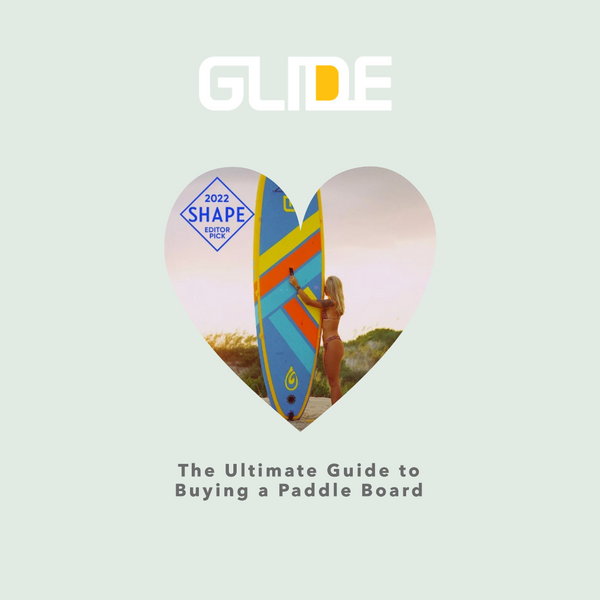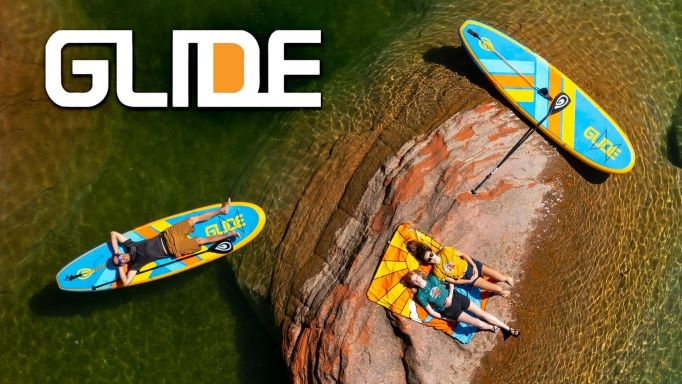
Paddle Board Buying Guide: How to Choose the Right SUP for You
Choosing your first paddle board can feel overwhelming. Our Paddle Board Buying Guide breaks down everything you need to know—types, sizes, features, and tips—so you can find the right SUP for your adventures.
Buying a paddle board is exciting — but with so many choices, it can feel overwhelming. The right board depends on your experience level, paddling goals, and lifestyle. This guide walks you through the key factors that matter most: board types, sizing, construction, and accessories. By the end, you’ll know exactly what to look for (and what to avoid) so you can choose a SUP that fits your needs and delivers years of fun on the water.
Table of contents
Buying a paddle board can feel overwhelming — especially if you're new to the sport. With so many styles, sizes, and features to choose from, how do you know what’s right for you?
This guide offers a streamlined breakdown to help you make a confident choice based on your skill level, how you plan to use your board, and what will give you the most fun on the water.
If you’re looking for a deep dive into SUP sizing, shapes, and more technical advice, check out our Ultimate Guide to Buying a Paddle Board.

What Is a Paddle Board?
A paddle board, also known as a SUP (stand-up paddle board), is a versatile watercraft you stand or kneel on while using a long paddle to glide across lakes, rivers, or oceans. The two main types are:
-
Inflatable Paddle Boards – Great for travel, storage, and durability
-
Hard Paddle Boards – Typically faster and more performance-oriented, but less portable
Want a more detailed breakdown? Read: Inflatable vs. Hard Paddle Boards
Key Factors to Consider When Choosing a Paddle Board
1. Skill Level
Your experience level plays a big role in choosing the right board:
-
Beginner: Look for wider boards (32"+), which offer more stability and confidence.
-
Intermediate/Advanced: Narrower boards (30–31") provide better glide and responsiveness, great for touring or performance paddling.
Not sure where to start? Check out our Best Paddle Boards for Beginners.
2. Primary Use
Different boards are designed with specific activities in mind:
-
Recreation: All-around boards like the Glide Wander offer great versatility for casual paddling.
-
Yoga: Boards like the Lotus Elite feature wide decks and full-length deck pads for grip and comfort.
-
Fishing: Look for boards like the Glide Mako that include gear mounts, extra width, and high capacity.
-
Touring/Fitness: Long, narrow boards provide speed and efficiency over distance—ideal for lakes or coastal cruising.
3. Weight Capacity
Each board has a weight rating, which you should not ignore. Consider:
-
Your body weight
-
Additional gear (coolers, kids, pets)
Choose a board with at least 20% more capacity than your total expected load.
4. Portability
If you need to carry your board long distances, travel with it, or store it in a small space, an inflatable board is likely your best option. Glide inflatables pack into a backpack and are lightweight enough for solo transport.
Want to bring your board on a flight? Read: Can You Fly with a Paddle Board? Here’s How
5. Build Quality
Build quality determines how long your board lasts and how it performs on the water. Here’s what to look for:
-
Drop-Stitch Construction: Allows inflatable boards to hold high pressure without warping.
-
Welded Seams (like Thermo-Fuse): More durable than glued seams.
-
Multi-Layer Materials: Improve puncture resistance and rigidity.
Glide boards are built with AeroMatrix woven drop-stitch cores and Thermo-Fuse triple-laminated rails for industry-leading performance.

What Size Paddle Board Do You Need?
Finding the right size is key to comfort and performance. Use this general guideline:
| Height | Weight Range | Suggested Board Size |
|---|---|---|
| Under 5'6" | Under 140 lbs | 9'6" – 10'6" |
| 5'6" – 6'0" | 140–200 lbs | 10'6" – 11'6" |
| Over 6'0" | 200+ lbs | 11' + |
Board width also matters:
-
32–35": Excellent for beginners, yoga, fishing
-
<32": Ideal for speed, fitness, and touring
If you’re uncertain, it’s usually better to go slightly longer and wider for added stability.
Best Paddle Boards by Category
Here are Glide’s top board picks by activity:
-
All-Around: Retro Elite SUP
-
Yoga: Lotus Elite SUP
-
Fishing: Mako Fishing SUP
-
Beginner: Wander Inflatable SUP
Each of these boards includes Glide’s premium construction, stability-enhancing design, and thoughtful extras like kayak seat compatibility and paddle blade attachments.
Why Choose Glide?
All Glide inflatable boards are:
-
Built with premium drop-stitch and Thermo-Fuse construction
-
Designed for real-world durability and adventure-ready performance
-
Equipped with essential extras: AirThrone kayak seat, kayak paddle blade, backpack, and repair kit
-
Covered by an industry-leading 5-year warranty
Glide boards are also rental-tested and trusted by outfitters across the country. Whether you’re paddling on a quiet alpine lake or loading up for a backcountry river expedition, our boards are made to go the distance.
Want to see how our tech compares? Check out: Why Glide Boards Are Built to Last
Still Not Sure?
Take the guesswork out of buying. Try our quick quiz to find the perfect paddle board for your size, skill level, and paddling goals.
🧰 Take the Paddle Board Quiz »

Final Thoughts: Paddle Board Buying Guide
Choosing the right paddle board isn’t about finding the “best” board on the market — it’s about finding the best board for you. Your height, weight, budget, paddling goals, and storage space all play a role in what makes the perfect match.
If you’re just starting out, stability and durability should be your top priorities. Boards with wider decks and solid construction — especially inflatable SUPs built with reinforced materials — make the learning process easier and more enjoyable. You’ll spend more time paddling and less time worrying about balance or dings.
For those with more experience, performance details like hull shape, fin setup, and weight may become more important. Touring boards glide faster for distance paddles, while hard boards can provide a performance edge for racing or surfing. But the truth is that most paddlers, even as they advance, continue to appreciate the versatility and convenience of a high-quality inflatable SUP.
Remember: your first board doesn’t have to be your last. Many paddlers start with an all-around inflatable board, then add a specialty board later if their style evolves. The important thing is to choose a paddle board that gets you excited to get on the water — because the best board is the one you’ll actually use.
At the end of the day, stand up paddle boarding is about freedom, adventure, and connection with the water. Whether you’re gliding across a calm lake, exploring ocean bays, or practicing yoga on your board, the right SUP opens up countless ways to enjoy the outdoors. Invest in one that matches your needs today, and you’ll gain years of fun, fitness, and unforgettable experiences tomorrow.
Ready to start your journey?
Explore all Glide inflatable SUPs »
FAQs
What type of paddle board is best for beginners?
An inflatable all-around board that’s 10–11 ft long and 32–34 inches wide. Stable, forgiving, and easy to transport.
Should I choose inflatable or hard paddle boards?
Inflatables are best for most people because they’re durable, portable, and versatile. Hard boards are better for surfing or competitive racing.
How do I know what size paddle board I need?
Most paddlers fit best on boards between 10–12 ft long and 32–34 in wide. Larger paddlers or those carrying gear should size up.
What’s the average cost of a paddle board?
Expect to spend $600–$900 for a quality inflatable SUP that lasts 5–10 years. Boards under $400 often cut corners.
What features matter most in a paddle board?
Construction quality (drop-stitch core, multi-layer PVC), stability (width), and warranty length are the most important factors.
Do paddle boards come with accessories?
Most inflatable SUPs come with a paddle, leash, pump, and backpack. Premium packages may include kayak seats and conversion paddles.
When should I upgrade my paddle board?
Once you’ve gained confidence and know your paddling style, you can move into specialized boards for touring, racing, yoga, or fishing.





